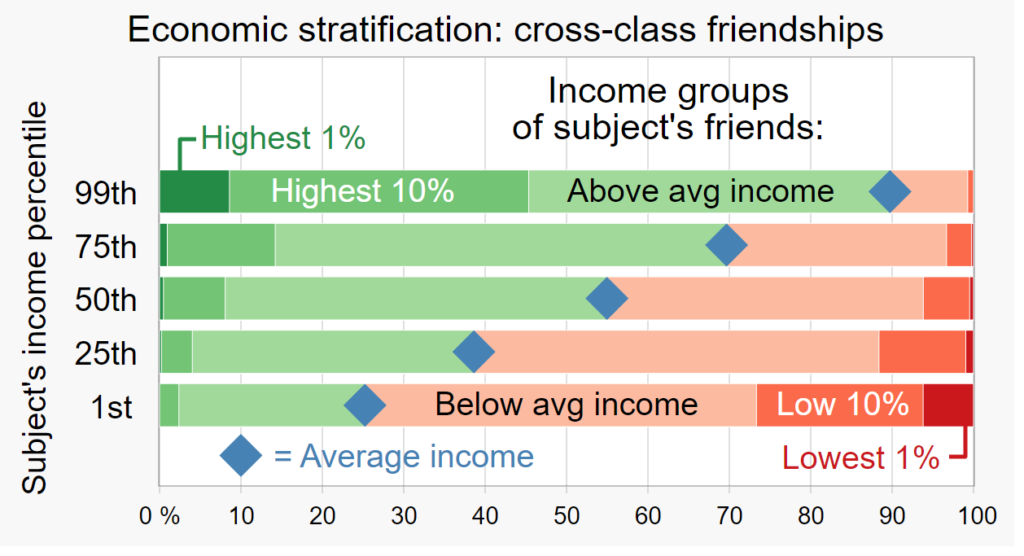
Yep, I said in my previous post that CR Snyder proved that there were six steps to enacting a strategy of hope, steps that are a necessary element of successful reinvention. Nowhere will you find any claim that ascending those steps is easy. Heck, finding a free hour to even contemplate the steps can prove difficult amidst all of our responsibilities and distractions. But those challenges make all the more rewarding the outcome: leaving your current field and enter successfully into another field, .
In that last post, I related the story of a remarkable Christmas Eve in 1991 when I read in a New York Times article about Rick Snyder and his Hope Theory. Weeks later, we put those principles into practice with the employees of American Savings Bank, which had been seized by the federal authorities due to losses and other irregularities. Every one of those employees was trying to figure out how to survive and we were very open that we didn’t know what was going to happen, but we did want to share with them this research on what characterized survivors of all sorts of problematic circumstances and changes.
In the end, the Feds closed down the bank, sold off its assets, and everyone lost their jobs. But before those horrible conclusions, we worked with every employee on this concept of hope. It resonated with them to an amazing degree. No one who works with people who are getting laid off should expect to escape brutal criticism; offering people solutions in their dark time can veer between Pollyannaish and hypocritical. No sensible person is fooled by the euphemisms firms developed to disguise these activities — ‘downsizing’, RIF (reduction in force), rightsizing, ‘workforce shaping’, ‘career center’, and ‘change management’. The nostrums reek of insincerity and bad faith. Such seminars and other interventions for people being displaced from jobs that they had held for many years seemed to me the equivalent of putting a Hello Kitty Band-Aid on a third-degree burn. That did not happen here: people kept wanting to talk about the research, the scale, the methods. They want to talk about what was happening to them and they wanted straight practical advice for what to do next.
When I inquired why these findings seemed to make sense to people in such a tough corner, several of the employees told me that they were hooked from the first of Snyder’s Six steps or aspects of the strategy of hope: ‘The successful survivors turned to friends for advice on how to achieve their goals.’ They turned to those friends not for what Kegan and Lahey would nicely explain to me a decade later as “BMW mode” — short for ‘bitching, moaning, and whining’” but for counsel and recommendations.
The success stories from Snyder’s research and subsequently from my own follow-up with the bank employees did not consort with ‘friends’ addicted to BMW mode, the kind who would gladly supply a further push into the sloughs of depression. In the days after the crisis first started and then the bank takeover happened, many of our participants realized that the people to whom they should talk at this time had to be people who were going to give advice rather than simply rant about the unfairness of it all. Of course, it was unfair: well over 90% of those employees had nothing at all to do with the causes of the bank’s troubles. But the ones to whom I spoke realized that what made sense in what Snyder was saying was the advice to turn to each other and their friends outside work for ideas on what to do next. And that’s true for those who wish to ‘survive’ even thrive via reinvention: talk to people who are going to listen to what you are trying to do, understand your goals, and then suggest advice on how to achieve those goals.
,Another Snyder step that resonated with what the bank employees were going through was that they were going to have to figure out how to break this formidable task of repairing their careers into specific, achievable chunks. Often when someone is looking for a job, they tend to think of the end result instead of all of the components of such activity. At that time in early 1992, hundreds of people in White Plains New York were faced unexpectedly with the need to undertake reinvention and I saw firsthand how practical and applicable CR Snyder’s work could be.
The event at American Savings Bank signified a turn in my career as well. Snyder’s work became a staple of my consulting work but more importantly provided a lens through which to see others. Who had hope and who did not? For the latter group, how might I turn them onto this very practical course? I also started looking for it in the academic worlds encountered through my own graduate teaching and the school experiences of our three kids who spanned elementary, middle, and high school environments at one point. What struck me the most at that time was the absence of awareness of this work at any of those levels. And I’ve been promoting it ever since and I’m going to do it one more time directly below.
‘Snyder’s Six Steps’ or Common Characteristics of Successful Survivors
Snyder put his research findings in a straightforward summary; the difference between someone favorably navigating challenging even overwhelming circumstances and faltering or failing could be found in whether they had follwoed these Six Steps:
- Turned to friends for advice on how to achieve their goals.
- Told themselves they can succeed at what they need to do.
- Even in a tight spot, they told themselves things will get better as time goes on.
- They remained flexible enough to find different ways to get to their goals.
- If hope for one goal fades, they aimed for another.
- “Those low in hope tend to become fixated on one goal, and persist even when they find themselves blocked,” Dr. Snyder said. “They just stay at it and get frustrated.”
- They showed an ability to break a formidable task into specific, achievable chunks.
- “People low in hope see only the large goal, and not the small steps to it along the way,” Dr. Snyder said
- “People low in hope see only the large goal, and not the small steps to it along the way,” Dr. Snyder said
Applying the Six Steps to Reinvention

I covered in previous installments of this series the importance of figuring out the ‘why’, ‘what’, and the ‘how’ of your reinvention. You can find links back to those posts at this summary. But for the person in the middle of the reinvention, here are Snyder’s 6 steps applied to that enterprise:
1.Turn to friends for advice on how to achieve your goals.
Don’t look for new jobs, look for conversations. In the very specific about the people that you buy coffee, tea, beer, wine, lunch, etc. in this quest: they should be people who are going to support what you are trying to do. Choose individuals who can give you good advice on how to achieve your goals. You’re wondering who those people are? They’re good people. They are the people who you see helping others. They are the friends of friends who receive admiration that they never even seek because of their generosity and wisdom. That doesn’t mean that they’re the most successful people in your universe. Depending upon how you measure success, individuals can gain that from a variety of causes. But the ones you seek are the people who have respect because of the way they pay forward their own good fortune.
Once you’ve determined that group, then you might winnow the numbers down by looking for those who have some experience or contact with the new field that you imagine you wish to enter. While talking to someone completely unfamiliar with the field may yield some general good advice at some point you have to become more specific and talk to those who have associated themselves with whatever this new profession that you seek might be.
2. Tell yourself you can succeed at what you need to do.
This step is crucial because self talk is necessary to positive reinvention. We need to tell ourselves that while we may not get everything that we are hoping to get out of reinvention and effects may not come right away that we are going to succeed at what we need to do. Circumscribing what counts as necessary in our reinvention is not only a concession to reality, but also a gift to our own well-being.
3. Even in a tight spot, tell yourself that things will get better as time goes on.
At some point in your journey of reinvention, prospects may look hopeless. And that’s when you realize that enacting a strategy of hope is something that is within your power. Here, the self talk involves cutting yourself some slack and believing that something good is going to happen soon because you are putting in all of the necessary causes. The universe will not forever be resistant to your efforts.
4. Be flexible enough to find different ways to get to your goals.
The metaphor that I use to explain this particular step when talking to anyone contemplating reinvention is that of someone who is digging an escape tunnel and hits solid rock. The successful escapee will move a couple of feet to the left or couple feet to the right and start digging again. More rock, more movement left or right, up or down.
In our reinvention, we must learn along the way. If we’ve been pursuing a particular job in a particular way and that has not yielded results than perhaps it is time to look at an adjacent occupation, to revise our methods of search. Some years ago, a young associate came to me with a goal of being a manager. They had already done several of the activities associated with getting that job; finished an MBA, read books on management, spoke to people who not only worked in management roles, but hired junior managers. Nothing clicked.
I asked them if they had any other possibilities before them. They answered that someone had offered them a job as an individual contributor, but they were worried if they went into that position that they would be on a different track, which might preclude ever getting to be a manager and abandon their overall goal of being a senior manager. I pointed out that once they were in that corporation and performing excellently in that role they would be closer to the networks that make most of the decisions around hiring. Their familiarity with the corporation would give them a decided advantage not only in knowing when manager jobs became available, but also knowing what features mattered most in that particular organization in the hiring of a manager.
Sure enough, not even a year after taking the individual contributor job, they were handpicked to manage a team. If they had kept on digging in the same direction insisting that the next job they took had to be a manager job who knows what would’ve happened? Flexibility is essential in reinvention.
5. If hope for one goal fades, you aim for another.
Spoiler alert: not everyone who ever sought my advice about a planned and much desired reinvention succeeded in their ambition. And as I sort out my memories of those situations, which thankfully are still in the minority of all the instances of talking to people about the subject, there are two general reactions that I recall: some became fixated on the original goal, and suffered almost paralyzing frustration over time. They could not learn that there were obstacles or deficits never imagined at the outset, which now posed significant and seemingly immovable obstacles to the initial goal. The other general reaction was a recalibration. The people in that group acknowledged that they knew more about getting to that goal and they had in the beginning and this newly acquired knowledge allowed them to rethink not just their method, but the viability of the goal itself. “I wanted to be a doctor, but maybe I should aim at physician’s assistant.” “All my life, my goal was to be an actor, but as I got closer to that happening I realized my nervous system is probably better suited for being behind the camera maybe even in the marketing of entertainment.” These survivors circled back to the original questions of ‘why’ and ‘what’. They realized that a new goal could still provide much of what they sought and even better was actually attainable.
6. Maintain an ability to break a formidable task into specific, achievable chunks.
There is a parallel in the steps to the much more technical worlds of project and process management. Those disciplines look at what is to be constructed or manufactured and then arrange the components in an orderly fashion. I’m not suggesting that those seeking reinvention treated strictly as some sort of project, but it is important to break down what you are trying to do into smaller chunks. Reinventing oneself as a realtor or a restaurant owner involves many distinct parts. There are things to learn, forms to fill out, certifications to gain, and people to know. But then each one of those tasks lends itself to further fragmentation so that when you wake up in the morning it’s not about ‘I need to become a restaurant owner today’, but more likely I need to score that appointment with someone so today or I need to research leasing of equipment or facilities.
That’s it although I think anything written about utilizing the 6 steps and Snyder’s hope theory in the service of reinvention will necessarily prove incomplete; you’ve got to talk through these things with other people and experience them and then talk some more. You’ve got to remind yourself of these features and ask whether your being faithful to them along the way, but how that plays out will be different depending upon your particular goal. And I stand committed to a principle I adopted many years ago: anyone who approaches me wanting to talk about this subject will get time with me. It might be Zoom, it might be over a suitable beverage if they are nearby, but no one will be turned down. As I said earlier, we are all in this together. We must continue to repay through service to others the extraordinary gifts that were given to us in terms of opportunities, advice, and encouragement.

A Final Two Caveats On Reinvention
This very last piece isn’t exactly the equivalent of the small print on a prescription, but should be thought of as due diligence in avoiding mischaracterization of reinvention.
Caveat # 1
Hope is not the same as ‘grit’
There are many different interpretations and definitions of the word ‘hope’. Sometimes, the quality gets pictured as something static or bestowed. That’s not the kind of hope that works as a strategy for reinvention. For example, hope is not the same as ‘grit’ as an article about the failure of research to support some of the beliefs about the concept of grit points out. Frank Worrell, one of the great scholars of high achievement and a past president of the American Psychological Association as well, noted that there were other factors with more substantial research supporting their role in high achievement that deserved attention through measurement and cultivation: “self-efficacy, self-regulation, hope and optimism”.
From that Frank Worrell article, his definition of the HOPE construct fits what we tried to do thirty one years ago at American Savings Bank:
“Hope, defined as one’s perceived ability to execute envisioned paths to future goals, is a two-component cognitive-motivational construct (Snyder, 2002, Snyder et al., 1991). Hope encompasses how individuals choose goals, how they plan to accomplish chosen goals, their motivation for accomplishing chosen goals, and their belief in their capacity to accomplish chosen goals.“
Please hold onto that distinction: hope because it is one’s perceived ability to execute envisioned paths to future goals is a capacity that we can gain, improve, and strengthen. Hope is not something that you either have or don’t have, that you are born with, blessed with, or left with. And as far as I have seen, it is not the thing with feathers although I don’t know all that much about birds.
Caveat 1A
Isn’t This Kind of Hope Just Another Way of Saying Be Optimistic?
And as Worrell and his co-authors point out, hope is not the same as self-efficacy or optimism:
“Hope has been distinguished from related constructs like self-efficacy and optimism both theoretically and empirically. … For example, optimism is likely to be experienced when students believe that they will accomplish a desirable future goal, like getting an A in a math course, but do not know how the good grade will come about. This feeling of optimism changes to hope when those students envision a pathway to getting the A (emphasis added) in the math class; that is, when they know how they will accomplish earning the A and in turn feel a sense of agency in the process of the A coming about (Snyder, 2002). Self-efficacy is different in that it is likely to be experienced before either hope or optimism. Self-efficacy is likely to be experienced in the can phase whereas hope and optimism are likely to be experienced in the will phase (Snyder, 2002). Continuing the example from above, students are likely to experience a sense of self-efficacy when they are deciding whether or not they can get an A in the math class.”

Caveat # 2
Success at Reinvention Requires More Than Just Hope as a Strategy
The complexity of reinvention bears repeating and articulating. Even though, hope is a strategy is an essential ingredient in successful efforts at reinvention, it’s not the only ingredient. Those who are able to make that transition to a different identity in their work usually possess substantial compliments of human and social capital. For our purposes…
Human capital includes:
- A broad set of cognitive skills and knowledge that include but are not just executing a hope strategy
- Interpersonal skills (collaboration, teamwork, communication that includes advocacy and inquiry, expression and listening)
- Character traits (motivation, persistence, reliability, self-discipline, agreeableness)
Social capital includes:
- Family and social networks
- Norms and values that guide behavior
My experience with all of these desired reinventions that I was fortunate enough to witness and at times coach is that the labels for these qualities are somewhat misleading in that they lead us to believe that there is a separate skill called ‘collaboration’ and another skill entitled ‘empathic listening’. These patterns of thought and feeling blend into each other and they will merge with hope as a strategy as well.
Caveat # 2A
Social Capital Accounts Hold Unequal Amounts
What also merits attention is that we have unequal access to social capital. My father was the first in his family to go to college and as he would often note his primary goals with his five sons was to keep us out of jail and get us into college. He went 5 for 5 in the first task and 4 for 5 in the second aim, which is a pretty good batting average. But he and the rest of our family of Irish immigrants gave all of us a significant advantage. Maybe it wasn’t the same advantage that richer kids from longer established American families had, but it was an advantage. Pretending that striving for reinvention starts with everyone at the same place defies common sense and reams of research. There are big gaps in the United States between rich and poor. Isabel Sawhill noted that the impact of unintended childbearing leads to predicted high school graduation rates rise from 76% as opposed to 82% and college graduation rates at 22% instead of 30%. My former colleague at ETS, Irwin Kirsch, led a research study almost ten years ago that verified what many of us know already: The simple yet disturbing fact is that across our country children are beginning life from very different starting points. Those who are born to privilege:
- Have parents who have both the time and resources to invest in their development
- Live in neighborhoods with cohesive networks
- Attend effective schools & receive quality healthcare
- Benefit from substantial public investments
Those born to struggling families:
- Have parents who face daily challenges to provide for them
- Live in neighborhoods with a lack of safe housing and few job prospects for residents
- Attend inadequate schools
- Are hampered by a lack public investments that support them
These different starting points place children on distinctly different trajectories of growth leading to vastly different outcomes.
The specifics are alarming and do not recognize them in talking about how people can approach their own reinvention would be more than hypocritical but deceitful. Consider these statistics:
- More than 16 million children live in families who have incomes below the federal poverty level.
- Nearly 1.3 million public school children were homeless at the start of the 2012 school year
- More than one in five children were food insecure at some point during 2013.
- Thirteen percent of children are growing up in neighborhoods that their parents describe as being never, or only sometimes, safe.
Perhaps you think that things have gotten better? A quick search reveals that now 22 million children live in families with incomes below the federal poverty level.
Lacking the ability or even willingness to tackle such things on a large political level, I can offer one ray of hope about this inequality of circumstances that certainly would affect someone’s chance for changing their lives in the ways that we have suggested in this series. One of the side effects of reinvention is often an awareness of what the individual owes to others. There is an opportunity to then reach out to other groups and individuals to help them up that same ‘ladder of opportunity’. I hope that those who have followed this series so far and are already on the way to their reinvention will also remember to pay it forward in helping others especially those without the same advantages.

More on Hope for the seriously interested
Hope continues to be studied as an important factor as indicated in this paper, Profiles of hope: How clusters of hope relate to school variables co-authored by Frank Worrell. And in that article, he alludes to the test developed by Snyder (who died way too young of cancer several decades ago) and his colleagues*** at Kansas. Here’s a simple view:
- Directions: read each item carefully. Using the scale below, please select the number that best describes you and put that number in the blank provided.
1 = Definitely False 2 = Mostly False 3 = Mostly True 4 = Definitely True
- ___ I energetically pursue my goals.
- ___ I can think of many ways to get out of a jam.
- ___ My past experiences have prepared me well for my future.
- ___ There are lots of ways around any problem.
- ___ I’ve been pretty successful in life.
- ___ I can think of many ways to get the things in life that are most important to me.
- ___ I meet the goals that I set for myself.
- ___ Even when others get discouraged, I know I can find a way to solve the problem.
*** The Hope Scale was developed by CR Snyder, Cherie Harris, John R Anderson, Sharon A Holleran, Laurie A. Irving, Sandra T Sigmon, Laurent Youshonobu, June Gibb, Cherylle Langelle, and Pat Hearney, Journal Of Personality And Social Psychology, 1991, volume 60 (four), 570 — 585
And here’s a link to a PowerPoint we used…
It’s in SlideShare here
And videos of our original session on Snyder’s Six Steps will be up here soon as well.
Finally, and this time I really mean finally, if you’ve gotten this far in reading all of these posts, I hope the view has been worth the climb as a colleague used to say. Yes, I do hope that. Good luck! But remember that luck has Branch Rickey once wrote ‘is the residue of design’, and design is ‘A plan conceived in the mind, and related senses‘, which means we have to do the best to make our own luck and one way that happens through following a strategy of hope.

Spot on!!! A very useful read for all of us. The wisdom here applies in all settings in which we’re experiencing change. Wonderful reminders of the process!!
Thank you for writing this very thoughtful piece. The timing is perfect! I’m sure many will find this read very relatable.
Thanks for such a comprehensive and thought-provoking piece. Sorry, that sounds cliched but I mean it! Hope is SUCH an important element of success, often characterised at a policy level as resilience (sort of like the grit you mention) on this side of the Pond, but lacking (through absolutely no fault of their own) in those coming from challenging circumstances. I’m thinking especially but not exclusively about HE entrants. I think hope resonates better than resilience (or grit). Thanks again…